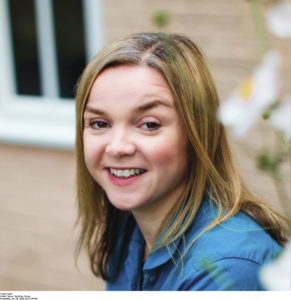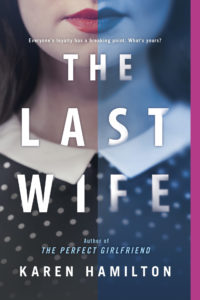Psychotherapy for Characters
Theatre trips are magical. I love the anticipation before the curtain raises, the imaginative sets, the actors, the story, the applause. As much as I enjoyed performing in school plays, I’ve never been able to act. Therefore, when a writer friend of mine, Phoebe Locke, recommended a psychotherapy service for fictitious characters called Characters on the Couch, I didn’t think that I’d be able to stay in character for a full fifty-minute therapy session. It turns out I was wrong. It was surprisingly (or worryingly, should I say) easy.
Once I’m roughly a third of the way through writing a new book, I attend a session ‘in character’ thinking as I believe my latest protagonist would, to try and delve deeper inside their dark minds. Having said this, I did have to stop halfway through one psychotherapy session to assure the psychotherapist that ‘I don’t really think like this.’ When creating a villain, or a not-particularly-likeable main character, I try to ensure that there is at least a little balance, so they are not completely bad or have a background which partly explains their current behavioural choices.
I also try to imagine how it feels to be the outsider looking in, whether it be personally or through the lens of social media and craving to be a part of the world they perceive as their personal ideal. I moved countries (and therefore, schools) a lot as a child so I sometimes wonder—although I can’t say for sure—whether this has had some influence on the characters I create.
When it comes to creating protagonists who would be capable of murder, violence or other crimes I have found psychotherapy to be incredibly useful and interesting as part of the whole research process. As well as attending a therapy session ‘in character’ and reading widely, I also attended a five-day psychotherapy course—Who Do You Think They Are?—designed for writers, in order to expand on my personal therapy sessions. The course is very thought-provoking and covers a wide variety of frameworks to understand how character is formed.
The first time I attended Characters on the Couch, I was nervous. As I travelled to the psychotherapy session by bus, I tried to think of all the questions I would ideally like answered. I thought how my character would think if they were to be making the same journey. Although dressing in the same kind of clothes as your character was an option, I didn’t, but it could have been another useful prop to get into the mindset of a ‘villain.’
My latest psychotherapy session has been online and over the phone, given the current circumstances. It was just as informative and useful and I believe, has helped to ensure that although my latest character is a criminal, she has vulnerabilities and solid ‘reasons’ (however unjustifiable) for a series of unwise choices.
I create family trees for my main characters, so although I have an understanding of where they come from and what has shaped their past, what is so fascinating and incredibly useful about psychotherapy is that it’s a fresh perspective on the different ways experiences can send lives shooting off on different paths. And not necessarily good ones. It also made me consider memories, how reliable they are and how we retell stories to try and make sense of them. This leads me to think about the image we present to the outside world, especially work personas or for professions which are required to wear a uniform.
The characters I create, although they aren’t necessarily the sort of people anyone would want in their lives, I still try and make them behave and escalate in ways that feel true to how they would react in their individual circumstances. Something which has always fascinated me when reading about a true crime are the comments about the suspect. So often you read that they ‘seemed so normal, so quiet.’
With all this in mind, I create a collage cut out of magazines and newspapers depicting the physical characteristics of my protagonists surrounded by all the things they want, need or have shaped them or are relevant to the novel. It provides me with an immediate visual reminder on my desk so that when it comes to violence, crime and murder I can always ‘see’ exactly what’s simmering darkly just below the surface…

Karen Hamilton spent her childhood in Angola, Zimbabwe, Belgium and Italy and worked as a flight attendant for many years. Karen is a recent graduate of the Faber Academy and, having now put down roots in Hampshire to raise her young family with her husband, she satisfies her wanderlust by exploring the world through her writing. She is also the author of the international bestseller The Perfect Girlfriend.
Her newest book, The Last Wife, is out July 7, 2020 by Graydon House

About the Book: Marie Langham is distraught when her childhood friend, Nina, is diagnosed with a terminal illness.
Before Nina passes away, she asks Marie to look out for her family—her son, daughter, and husband, Stuart. Marie would do anything for Nina, so of course she agrees.
Following Nina’s death, Marie gradually finds herself drawn into her friend’s life—her family, her large house in the countryside. But when Camilla, a mutual friend from their old art-college days, suddenly reappears, Marie begins to suspect that she has a hidden agenda. Then, Marie discovers that Nina had long suppressed secrets about a holiday in Ibiza the women took ten years previously, when Marie’s then-boyfriend went missing after a tragic accident and was later found dead.
Marie used to envy Nina’s beautiful life, but now the cards are up in the air and she begins to realize that nothing is what it seemed. As long-buried secrets start surfacing, Marie must figure out what’s true and who she can trust before the consequences of Nina’s dark secrets destroy her.

